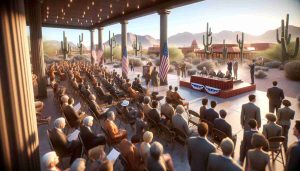
Exploring the Impact of Conflicts on the Middle East Region
In the midst of rising tensions, the Middle East faces yet another wave of conflict and uncertainty. The recent clashes, notably the airstrikes on Hezbollah targets in Lebanon by Israel, have sparked concerns about the escalating violence in the region.
Escalation Strategies and Geo-Political Dynamics
The use of military force as a means to achieve strategic objectives continues to define the current situation. As various factions navigate their interests, questions arise about the potential outcomes of these conflicts and the paths towards de-escalation.
The Quest for Stability
While leaders like Prime Minister Netanyahu aim to use force to compel adversaries to cease hostilities, the underlying question remains: how sustainable is the pursuit of peace through military might? The focus on shifting battlegrounds and evolving targets raises uncertainties about the efficacy of these approaches.
Challenges Ahead and Unresolved Issues
With ongoing debates about the classification of conflicts as full-scale warfare, the presence of external actors like the United States adds layers of complexity. The role of global powers in shaping the outcomes of regional disputes underscores the intricate web of alliances and agendas at play.
A Call for Diplomacy and Long-Term Solutions
As the region grapples with the specter of prolonged conflicts, the need for diplomatic interventions and sustainable resolutions grows increasingly urgent. The repercussions of continued violence reverberate far beyond borders, affecting lives and livelihoods across the Middle East.
Charting a Path Towards Peace
Amidst the chaos and discord, the quest for lasting peace remains a beacon of hope. By addressing root causes, fostering dialogue, and embracing multilateral cooperation, the region can aspire to a future defined by stability and mutual respect.
Unveiling New Dimensions of Conflict Impact in the Middle East Region
In the intricate landscape of conflicts shaping the Middle East, certain crucial aspects come to light, shedding further understanding on the complexities at play.
Exploring Economic Ramifications and Humanitarian Crises
Beyond the immediate toll of military engagements, the economic repercussions of prolonged conflicts loom large. The drain on resources, destruction of infrastructure, and displacement of populations raise pressing questions about the long-term sustainability of the region’s economies and the well-being of its people.
The Role of Ideology and Sectarian Divides
Unpacking the ideological underpinnings of conflicts in the Middle East unveils deep-seated tensions rooted in differing beliefs and historical grievances. How do these ideological divides perpetuate conflict, and what efforts are being made to bridge these divides for a sustainable peace?
Environmental Concerns and Resource Scarcity
In a region rife with environmental challenges, conflicts further exacerbate issues of resource scarcity and environmental degradation. How are conflicts impacting water access, land use, and broader environmental concerns in the Middle East, and what implications does this hold for future stability?
Key Challenges and Controversies
Central to the discourse surrounding conflicts in the Middle East are questions on the effectiveness of military interventions versus diplomatic solutions. What are the major obstacles hindering peaceful resolutions in the region, and how can these challenges be effectively addressed to pave the way for sustainable peace?
Advantages and Disadvantages of Current Strategies
While military actions may yield short-term gains in terms of tactical victories or deterrence, the long-term consequences often lead to cycles of violence and deepening animosities. Conversely, diplomatic efforts, albeit slower in producing visible results, offer a path towards lasting reconciliation and stability. Balancing these approaches presents a systemic challenge amidst the region’s complex dynamics.
Suggested Resources for Further Reading:
– Brookings Institution
– Council on Foreign Relations
– Atlantic Council
By delving into these multifaceted dimensions of conflict impact in the Middle East, we can garner a more comprehensive grasp of the challenges at hand and strive towards effective solutions that pave the way for a more peaceful and sustainable future for the region.

















